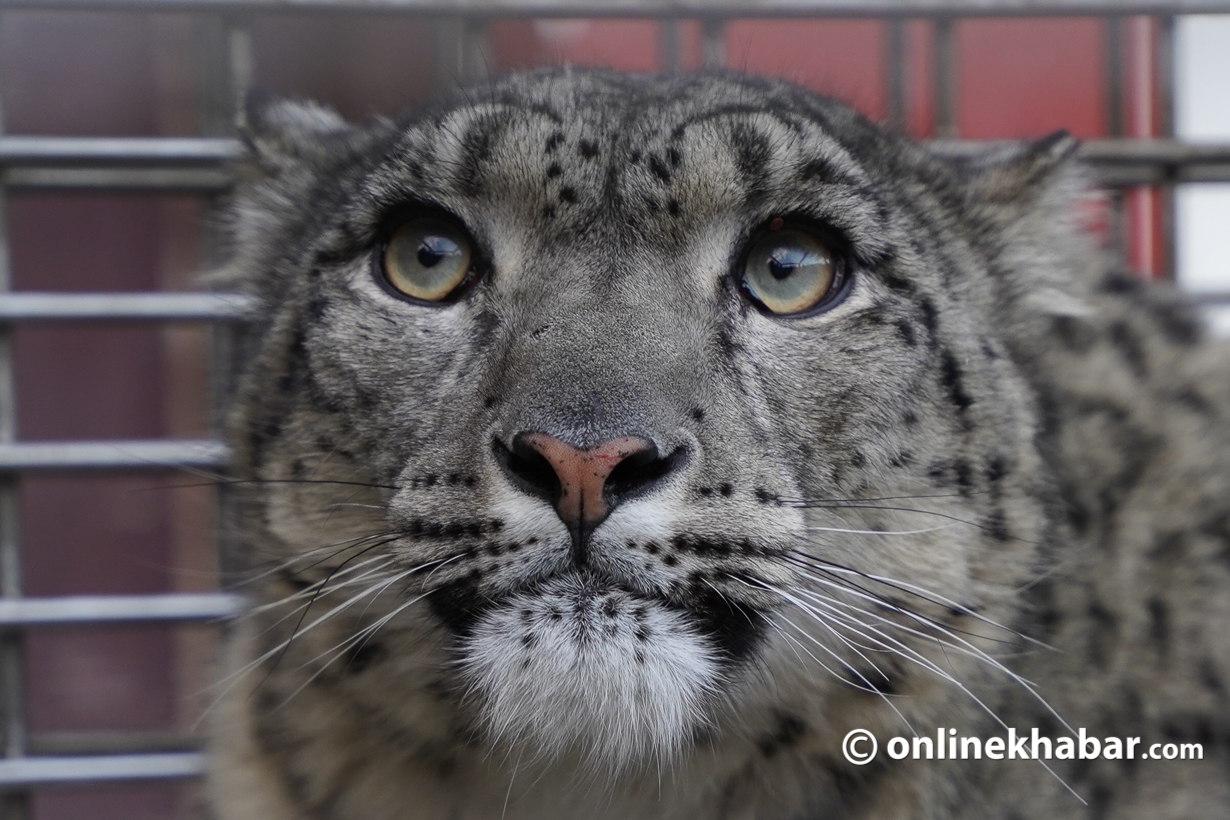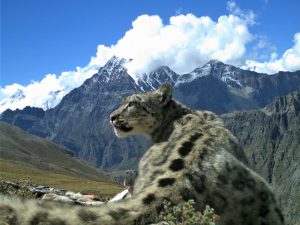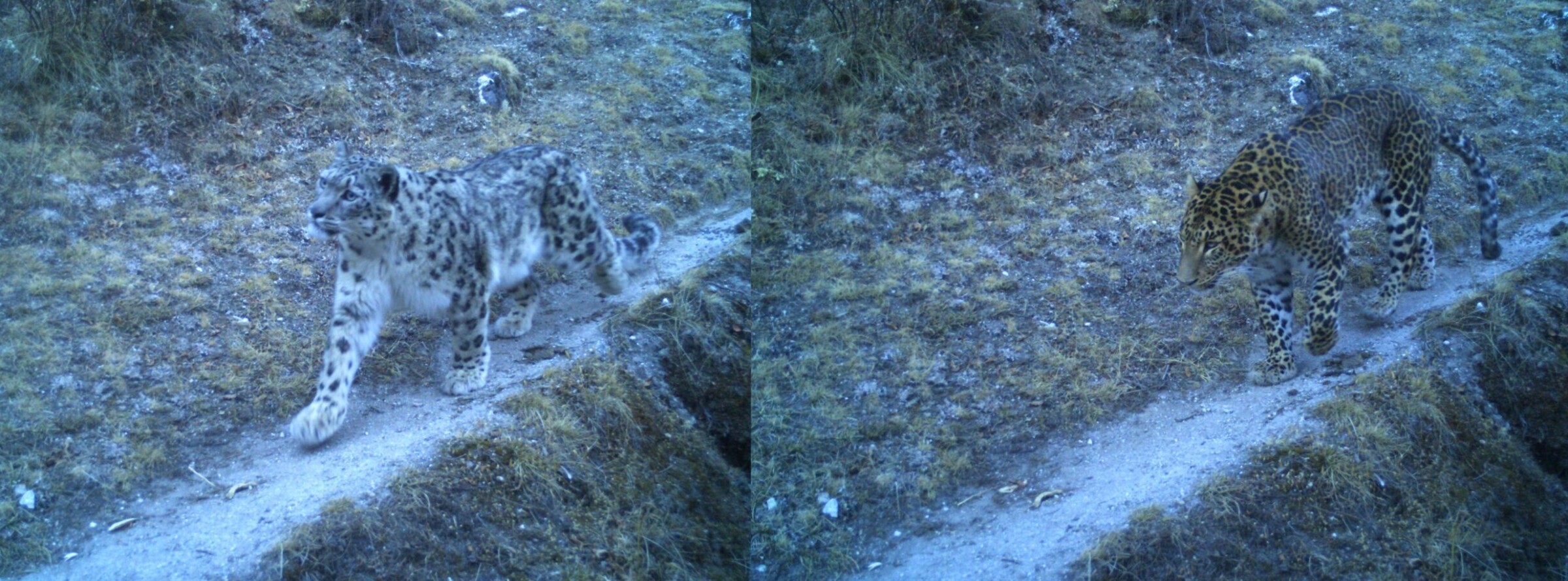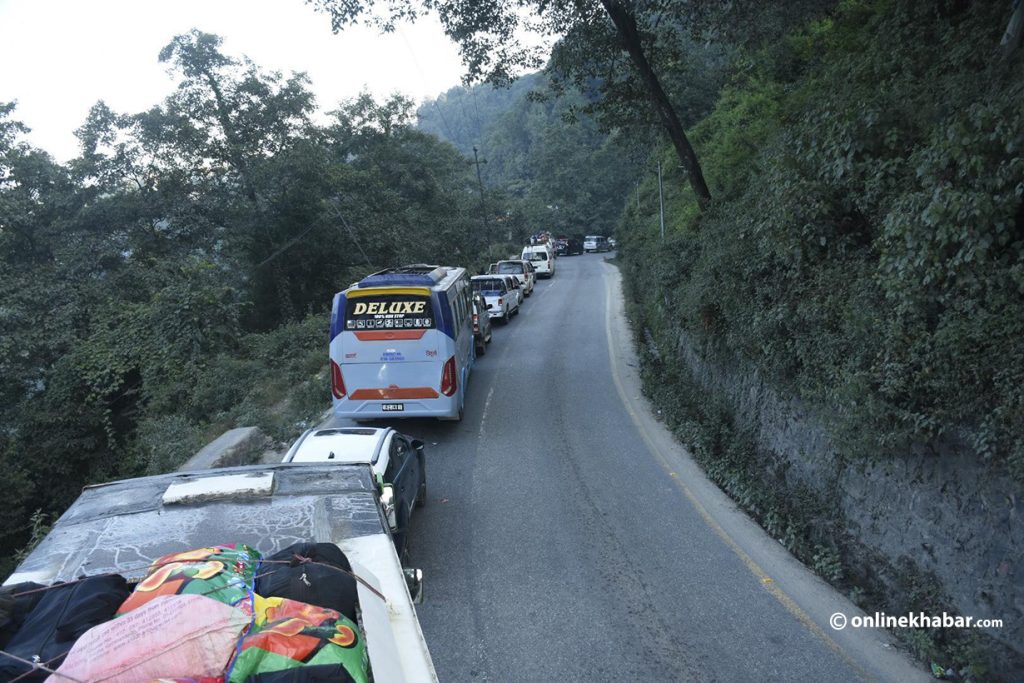
In May 2024, a research institute in the Czech Republic did the first-ever extensive research on the snow leopard in the Manaslu Conservation area.
Extensive research was initiated after installing almost 120 remote cameras between 2,500 m and 3,000 m above sea level. These cameras covered an area of 2,000 km² in the three municipalities of Manaslu— Chharka Tangsong, Kaike, and Dolpo Buddha Rural Municipalities.
The cameras were able to detect only 13 adult animals and two cubs, a number that was well below the original estimation.
The research was led by Dr Bikram Shrestha, who works as a researcher at the Czech Academy of Sciences (GCRI). Dr Shrestha has mobilised a team of 33 scientists, three students and seven DFOs to deploy the camera, make the observation, and do the studies.
This three-year-long study was divided into two sections. The study in the Western site around the Nubri Valley (a major area affected by the Manaslu Trek) was conducted from 2020 to 2021. The same cameras were installed on the eastern side of Chum Valley another year. It took one more year to analyse and assess the data.
Thirteen snow leopards were detected in an area of 2000 km2; thus, the population density in the Manaslu Conservation area is estimated to be about 1.5 per 100 km2. The number was very low in comparison to the previous estimation, indicating the increasing vulnerability of the snow leopards in Nepal.
Speaking about the research, WWF Nepal head Ghana Shyam Gurung said, “Snow Leopards are among the least studied species in the world. Such extensive research from experts in collaboration with the government helps map their habitat and make protection strategies.”
Why are snow leopards important for Nepal?

Listed among the endangered species (red list category) by the International Union for Conservation of Nature (IUCN), the Snow leopard is a major protected species in the world. IUCN has indicated that the human and snow leopard conflict is the major reason for the decline of these mountain cats.
These include deforestation and fire in the alpine area, extensive livestock grazing, and haphazard human settlement. Other responsible factors may be the reduction of natural prey bases and, on a serious note, poaching and illegal trade. Moreover, as per the National Parks and Wildlife Conservation Act 1973 of Nepal, the snow leopard falls under the status Protected (Appendix I), which is the most vulnerable kind.
These spotted wild cats of the mountains thrive best in the cold, arid and semi-arid area that has enough open grasslands and open forests. Also, steep terrain around the cliffs and rocky landscape between 3,000 m and 5,500 m are perfect for their habitat.
This means the central Himalayan Region is the only place where these animals can be preserved and protected. It can be said that these wild beasts of the mountains are unique to the Himalayan range, mostly living around the highlands of Nepal, India, Bhutan, and Pakistan.
Although IUCN has listed 12 counties where snow leopards are found, almost 80 per cent of the population is found in these four countries alone. Currently, it is estimated that there are less than 4,300 snow leopards in the world.
WWF reports that there are only 300 to 400 snow leopards in Nepal, with their habitat distributed over 13,000 km2. In short, Nepal hosts 10 per cent of the global population of snow leopards. So, protecting snow leopards has always been very important for Nepal’s Conservationists and Environmental Advocates.
Where can snow leopards be found in Nepal?
Five habitat blocks have been identified from west to east Himalayas of Nepal. The western habitat block, with an area of 9,915 km2, is home to the largest number of snow leopards, with a population density of 3.2. Other habitats, Rolwaling and Sagarmatha, have an area of 1,129 km2 and 220 km2, respectively. Makalu- Barun and Kangchenjunga block has an area of 853 km2 and km2, respectively.
In 2023, a similar systematic camera trap survey was done within the population in Shey Phoksundo National Park (SPNP) to detect the number of snow leopards in this area. It was calculated that SPNP habitats 90 snow leopards with a looping population density of 2.2/ per 100 sq km. This confirms that western Nepal is the major habitat for snow leopards.
In the Rowling Habitat block i.e. Langtang National Park the number of snow leopards is estimated to be around 17 with a population density of 1.5 snow leopards per 100m2.
Research by ICIMOD in 2024 showed 74 snow leopards in the Sagarmtha National Park zone. Although an extensive camera trap survey was done after that, the number is expected to have declined due to excessive human interference and tourism in the Sagarmatha National Park Area.
Research in Kangchenjunga Conservation Area in 2021 confirmed 19 unique snow leopards (10 males and 9 females) within the area. No research has been done in the Makalu- Barun habitat block yet.
Conservation efforts
The National Park Conservation Authority, in collaboration with the WWF Nepal, has been trying to initiate a community-led conservation for snow leopards. The formation of a Snow Leopard Conservation Committee (SLCC) in the major habitat block and the mobilisation of locals for protection and research in Kangchenjunga Conservation Area (KCA) is a good initiative.
ICIMOD has also made similar attempts at conservation in the Sagarmatha National Park. These small-scale mobilisations have surely shown some effect on the protection of snow leopards.
Unfortunately, these small efforts to preserve them are not enough, and the number of snow leopards has been decreasing at an alarming rate in Nepal. A 72 per cent drop in the population of snow leopards has been seen between 1996 and 2022.
Global warming, displacing the low-altitude snow leopard, tourism, increasing business activities in higher mountain areas, and loss of habitat have been the biggest reasons for their disappearance. A national-scale program in the alpine zone of Nepal must be planned in the future.
If the conversation actions are not taken strictly, this beautiful creature may end up being another addition to the “Extinct Animal” list.






















